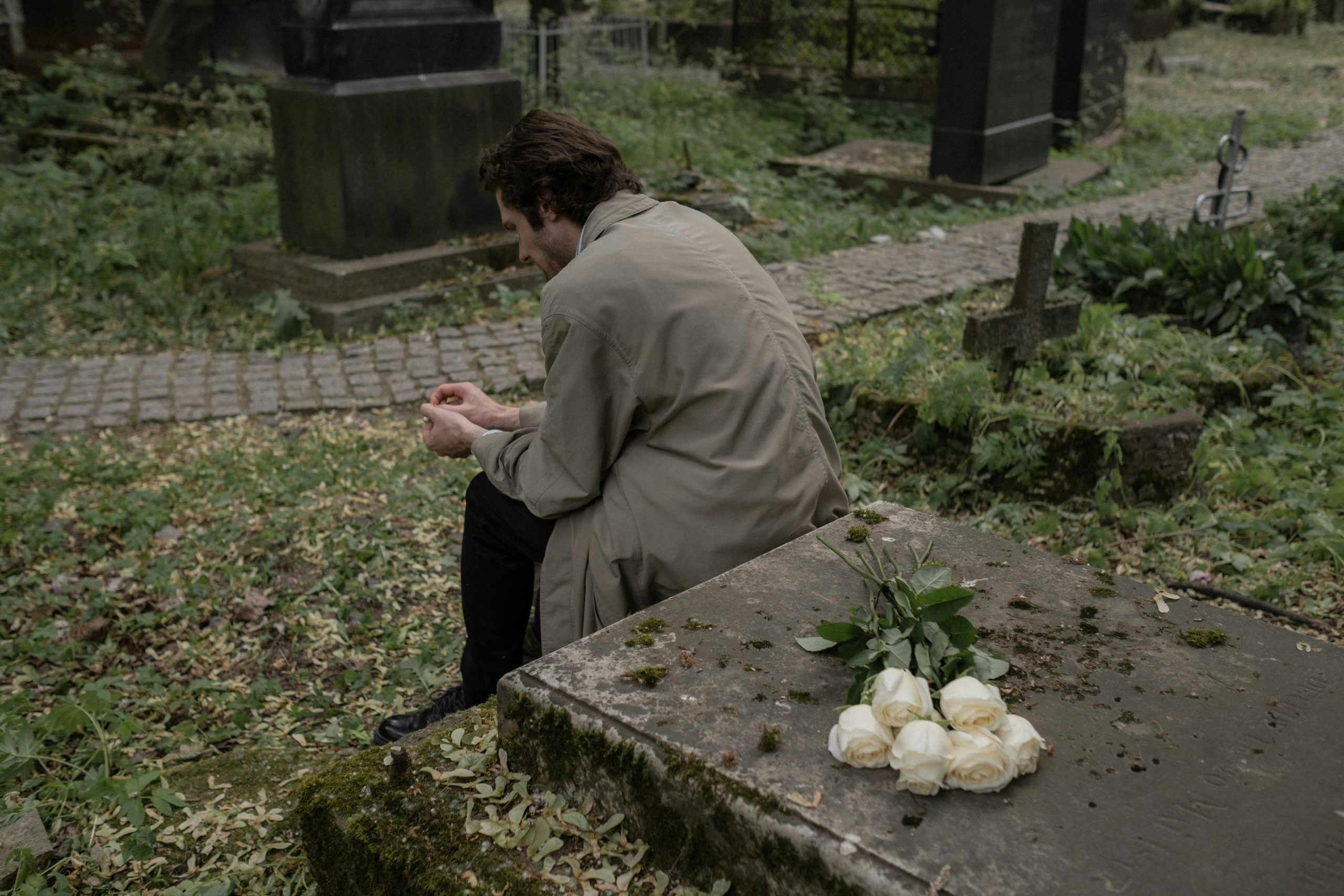Understanding Grief in the Context of Pet Loss

Pets and their families share a special and deep bond that frequently goes beyond simple companionship to form a strong emotional bond. Understanding that grief is a normal reaction to losing a pet is essential because it gives meaning to our emotions and aids in our grieving process. However, the ways in which adults and children experience and communicate this grief may differ.
- Adults may turn to peers for support or work through their feelings on an internal level.
- Youngsters may react in a variety of ways, ranging from profound sadness to bewilderment, and they frequently require assistance in order to recognize and express their emotions.
It is essential to acknowledge the loss within the family, have an honest conversation about it, and keep in mind the happiness the pet brought into your lives. It creates a caring atmosphere where everyone can mourn in their own way without feeling alone during their loss. In addition to honoring the memory of the cherished pet, this collective acknowledgment helps to fortify family ties during times of loss.
Traversing the First Few Days Following a Loss

Establishing an Area for Sensual Expression
It’s crucial to establish a loving environment where family members feel comfortable expressing their feelings after losing a pet. This transparency makes it possible for loved ones to go through grief together, strengthening their bond and understanding of one another. The healing process can be greatly aided by promoting discussions about emotions and memories.
The Importance of a Farewell or Memorial Service
Planning a farewell or memorial service is essential to the grieving process. It provides a material means of paying tribute to the life of the animal and its influence on the household. Whatever feels most fitting can be a more elaborate event, or it can be a small, private get-together. Recognizing the loss and beginning the healing process are aided by the act of gathering to honor and celebrate the life of the pet.
Selecting the Space and Belongings for the Pet
It can be difficult to decide what to do with the pet’s possessions and space. Certain items may be kept as mementos, but others may find comfort in immediately rehoming these items. Respecting each person’s emotional needs and the amount of time they may need to say goodbye, it is crucial that you make these decisions as a family.
Methods for Handling the Lack of Daily Schedules
When daily rituals that were previously centered around the pet are abandoned, a discernible gap may remain. Creating new routines will assist in handling this transition. It can be therapeutic to include activities that pay tribute to the pet, like walks in their favorite park. Furthermore, it can help to adjust to the new normal if each family member is given the opportunity to express their emotions and memories during these times.
Transmitting Information About Death to Children

Age-appropriate Death Reasons
Educating kids about death necessitates being sensitive to their developmental stage. It’s crucial to explain death to young children in plain, simple terms by saying that it means a person will not return. Steer clear of euphemisms that could mislead them, such as “long time sleep.” As kids get older, they can comprehend explanations that are more complicated and that death is inevitable.
Promoting Inquiry and Emotional Expression
Establish a transparent atmosphere where kids can freely ask questions and share their emotions. It’s common for kids to have a lot of questions or to grieve in ways that adults don’t understand. Assure them that it’s acceptable to feel depressed, perplexed, or even furious as you encourage them to express their ideas and emotions.
Using Narratives and Books to Promote Understanding
Children can learn about death through books and stories, which are effective teaching tools. By using relatable characters and situations, they provide a means of indirectly discussing the subject while offering consolation and understanding. Choose books that gently address the concept of loss and are appropriate for the reader’s age.
The Significance of Integrity and Plainness in Conversations
Being honest is important when talking about death. It facilitates the development of trust and helps the child grasp the idea. The secret is to keep things simple and give the child information that is suitable for their developmental stage and emotional state. This method assists kids in processing the data without feeling overloaded.
Building Monuments and Honoring Your Pet

Concepts for Structural Remembrances
- Planting a tree as a living, breathing reminder of their presence in their favorite garden spot.
- Making a photo album with images of your pet’s most joyful times is a reassuring way to remember and honor their life.
The Significance of Remembering Events
- Marking the anniversary of your pet’s passing by revisiting their favourite places, sharing stories, or donating to an animal charity in their name.
Preserving the Memories While Proceeding
- Integrating their memory into your daily life through small gestures like keeping a framed photo in a special place or wearing a piece of jewellery engraved with their name.
Managing the Decision to Get Another Pet

Assessing Readiness for a New Pet Among Family Members
Before welcoming a new pet into your home, it’s essential to gauge the readiness of all family members through open discussions.
Understanding That a New Pet Is Not a Replacement
Acknowledge that a new pet cannot replace the one you’ve lost, embracing this new pet as an individual with its own quirks and charms.
Considering the Timing and Type of Pet
- Timing: Wait until the family has moved through the initial stages of grief.
- Type of Pet: Consider the type of pet that best suits your family’s lifestyle and the living environment you can provide.
Preparing for the Introduction of a New Pet to the Family
Preparation includes setting up a comfortable space for the new pet, discussing care responsibilities, and gradually introducing them to each family member.
Resources and Further Reading

Books, Websites, and Articles
- Books like When a Pet Dies by Fred Rogers offer solace and understanding.
- Websites like the Rainbow Bridge and the ASPCA provide comprehensive articles and forums.
Professional Organizations and Counseling Services
Organizations such as the Australian Centre for Grief and Bereavement offer specialized counseling services.
Community Groups and Events
- Local support groups and memorial events allow individuals and families to come together, sharing stories and memories.
Educational Materials on Grief and Coping Mechanisms
Educational materials offer practical advice and emotional support, equipping you with the tools needed to navigate your emotions.
In Conclusion
Grieving a pet is a journey of love. It teaches resilience and cherishes memories. Through shared experiences and commemorations, families find solace and a path to healing, balancing the pain of loss with the joy of remembrance. Let’s carry forward their legacy, embracing the support and strength within our community and ourselves, as we navigate life’s continuance with their memory in our hearts.
Coping with the Loss of a Pet: A Family Guide FAQs
While getting another pet can provide comfort and companionship, it’s important to ensure you’re emotionally ready. Each pet is unique and forming a new bond doesn’t replace the lost one but creates a new space in your heart. It’s crucial to allow yourself time to grieve before making the decision to bring another pet into your life.
When explaining euthanasia, it’s important to use gentle language that conveys the act was a compassionate choice to relieve suffering. Emphasize that it was a difficult decision made out of love and care for the pet. It’s also helpful to reassure your child that feeling sad or confused is normal and that you’re there to support them.
It’s important to be honest and use age-appropriate language when explaining the death of a pet to a child. Encourage them to express their feelings and reassure them that it’s okay to be sad. Providing a simple, clear explanation can help them process the loss and begin to cope.
Offering a listening ear and acknowledging their loss can be very comforting to someone grieving a pet. Simple gestures like sending a card, sharing a fond memory of the pet, or offering to spend time with them can show you care. It’s important to let them lead the conversation about their loss and to offer support without minimizing their feelings.
The grieving process is different for everyone and there is no set timeline for healing. It’s normal for the intensity of grief to fluctuate and it may take weeks, months, or even longer to begin to feel ‘normal’ again. Patience with oneself and seeking support from others can aid in the healing process.
Feeling guilty after the loss of a pet is a common reaction among pet owners. It’s important to understand that these feelings are part of the grieving process. Talking about these feelings with someone who understands can be very helpful.
It’s not uncommon for pets to show signs of grief after losing an animal companion. They may exhibit changes in behavior, such as loss of appetite or decreased activity. Providing extra attention and maintaining a routine can help them adjust to the loss.
Engaging in activities that honor the memory of your pet, such as creating a scrapbook or writing about your favorite memories, can be therapeutic. Additionally, seeking support from pet loss support groups or a counselor can provide comfort. Taking care of yourself physically and allowing yourself to grieve are also crucial steps in the healing process.
Creating a memorial for a pet can be a healing way to honor their memory. This can be done through planting a tree, making a photo album, or holding a small ceremony. Such acts provide a tangible way to remember and celebrate the pet’s life.
Deciding what to do with your pet’s belongings is a personal choice and should be done when you feel ready. Some people choose to donate items to animal shelters, while others may keep certain items as mementos. It’s important to do what feels right for you and to allow yourself time to make these decisions.

Jasmine Duque-Love is a mother of one and a practicing physiotherapist with a Phd in Physiotherapy

